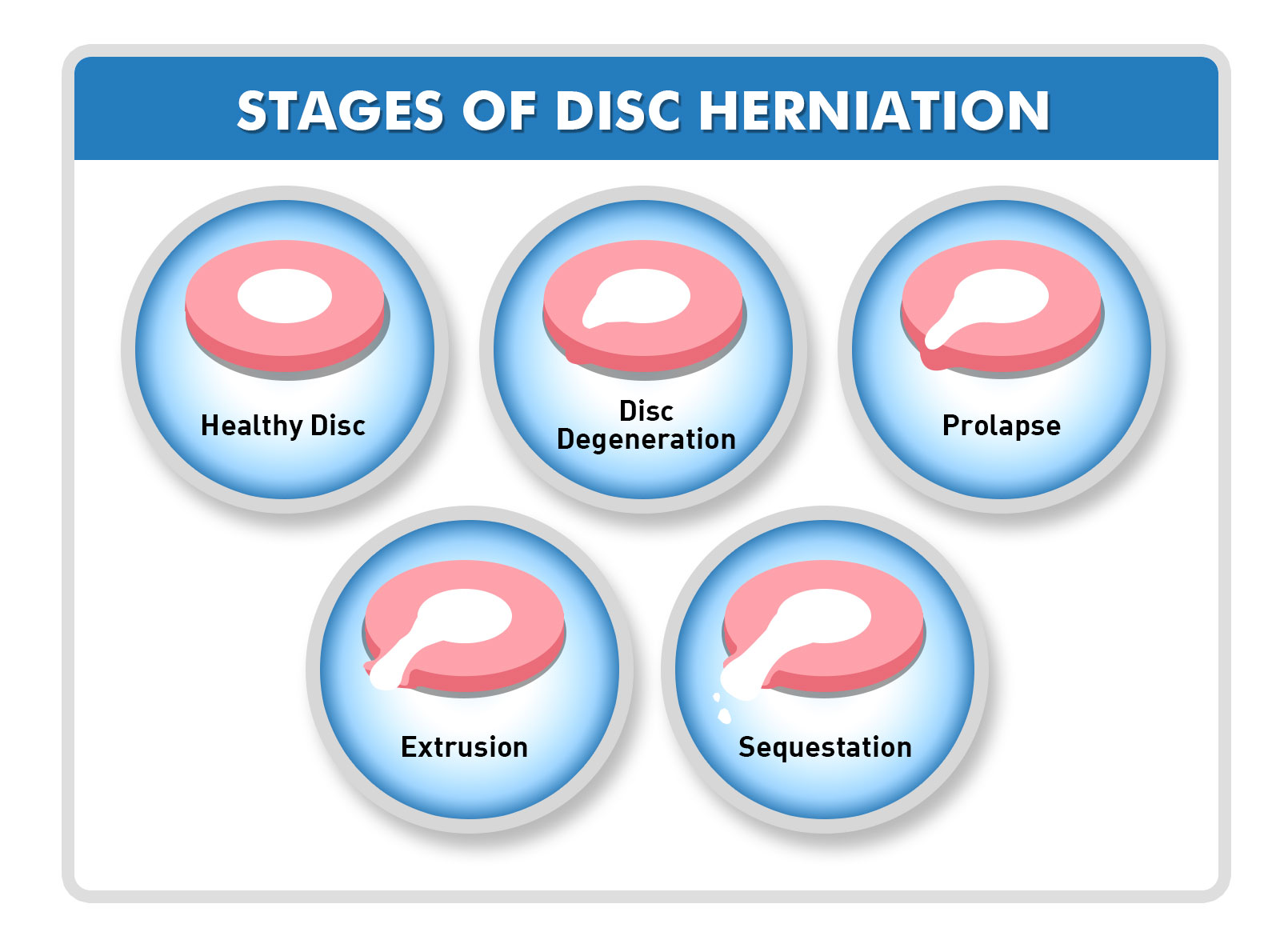The spine consists of interlocking bones called vertebrae, with intervertebral discs between them. These discs have a soft center and a stronger outer edge, serving to prevent friction between the vertebrae and maintain their connection. They act as shock absorbers in the spine, allowing for smooth movement during activities like carrying heavy objects or bending awkwardly. Without intervertebral discs, the upper torso would lose its mobility. Despite their small size, these discs play a vital role in facilitating body movement.
Disc injuries can happen in any part of the spine, affecting the intervertebral discs in the neck (cervical), mid-back (thoracic), or lower back (lumbar). Such injuries can advance through different stages as they develop.
In the initial stage (degeneration), the disc experiences strain and becomes distorted from its normal functioning shape.
The bulge becomes more noticeable, and the center of the disc (nucleus pulposus) starts to protrude towards the outer fibers, reaching the disc's edge.
A herniated (extrusion) disc happens when the outer fibers (annulus) rupture, leading to the complete leakage of the nucleus pulposus.
This condition may arise when fragments of the disc material break off and intrude into the neighboring areas, causing further complications and potential damage.
Dr. Brent Ungar has treated many patients who have experienced disc injuries. Considering the unique nature of each disc injury, the appropriate treatment approach may vary, making a thorough evaluation essential to determine the most suitable course of action.
If we determine that we can assist with your issue and you choose to proceed with a treatment plan, we will collaborate closely with you to resolve the problem. Feel free to contact us at 330-493-0009.
